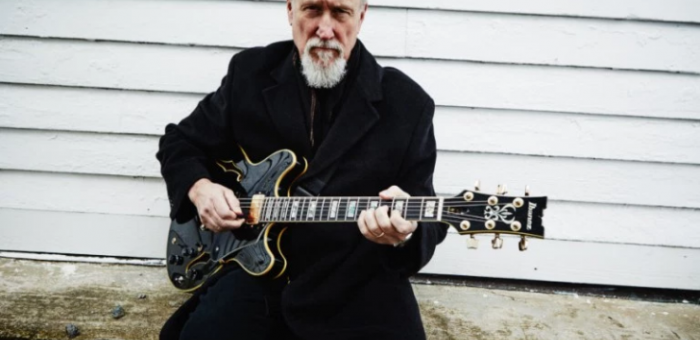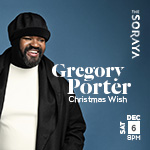Oct 28, 2025 10:47 AM
In Memoriam: Jack DeJohnette, 1942–2025
Jack DeJohnette, a bold and resourceful drummer and NEA Jazz Master who forged a unique vocabulary on the kit over his…

On John Scofield’s new album, Country For Old Men, the guitarist interprets classic country music tunes.
(Photo: Courtesy johnscofield.com)John Scofield is known for pushing genre boundaries with his guitar, and his most recent foray into musical hybridity is Country For Old Men (Impulse!/Verve), an album on which the six-string veteran wrangles classic country tunes.
The 12-track program reaches back to legends like Hank Williams (“I’m So Lonesome I Could Cry”), George Jones (“Mr. Fool”) and Merle Haggard (“Mama Tried”). But don’t worry: While Scofield puts a little twang in his trusty Ibanez ax, he never loses his jazz identity.
The band—featuring pianist Larry Goldings, bassist Steve Swallow and drummer Bill Stewart—honors the vintage country winsomeness of these songs while refusing to be limited by it. Their hard-swinging jams allow Sco’s angular disposition to emerge vividly.
DownBeat spoke with Scofield as he and the band prepared for a weeklong appearance at The Blue Note in New York City.
So what prompted an album of country covers?
For a long time, I’ve thought it would be great to do a whole country album, and I had toyed with the idea of going to Nashville and playing with country guys. But then I thought, “You know, there’s a way to do what we did on this album, which is really blending jazz and country more, and to do it with some of the guys I play with, who are sympathetic to country music.”
I’ve had a trio with Bill Stewart and Steve Swallow for years, and Larry Goldings played in my band for a few years in the ’90s, so I really know how those guys play and I knew we could make jazz out of these songs.
You seem to have adopted the idiomatic twang of these country classics into your own sound. How did you get yourself and your band into a country state of mind for this album?
I just listened to country music, and listened specifically to songs I knew we wanted to play and I learned them. I knew them anyway, but just sat down and played the melodies on my guitar and really thought about performing them as single-note melodies.
And for the other guys, I sent them a little four-track demo that I made of my arrangements of the songs, where I had a drum track going and played bass and rhythm guitar. And I also sent them links to the original tunes so they could hear those, too. But I’m not sure how much of that they listened to [laughs]. Then we got together and recorded.
The band really captures the original authenticity of these melodies before departing into some burning jazz, yet the transition never seems forced or awkward.
I picked tunes where I could have them turn into jazz, so we could blow and swing on them, and I maybe changed the chords a little bit to make each song a real blowing vehicle. That was really important because I didn’t want to do just folk-country. I wanted to be able to make jazz out of it.
You’ve talked about coming up in the ’60s in the suburbs of New York, during the heyday of electric blues and folk. But when did country first catch your ear?
I listened to the radio all the time, so I was aware of all the country music hits, since childhood, really. “Ring Of Fire,” “Jolene” and “Mama Tried”—you just heard them on the radio. Country music was big.
Even though I wasn’t a country music freak, I appreciated the guitar work, and I’ve always loved Appalachian music and bluegrass and that deep country sound of George Jones and Hank Williams. I’m a fan of that, along with being a fan of a lot of different music.
I never tried to play country music before and never hung out with many country musicians, so I’m certainly not qualified to be a country player. But I wasn’t trying to do that on this album.
On the last track, you play this ultra-catchy vignette of Johnny Mercer’s “I’m An Old Cowhand” on ukulele. How did that happen?
I was in Honolulu, playing at a jazz club there, and they gave me that ukulele, and I’d never really played one before. But the first thing I played when I picked it up was “I’m An Old Cowhand” because I was still learning songs for this record. And I liked the way it came out on the ukulele, so I used that. It’s a four-string ukulele with My Dog Has Fleas [G-C-E-A] tuning.
Did recording these songs your own way, with your own arrangements, enhance your connection to them?
Well, I’ve played these melodies on tour now and I feel a real connection to the songs, and of course I love the artists who sang them. They sang these melodies that I’m interpreting on the guitar, which makes it somehow different, and that’s why I wanted to do it.
When we were recording, I felt an emotional bond with the music that was very strong, and I remember feeling surprised about that. And then when we’d take them into jazz, it didn’t feel fake; it just felt right.

Jack DeJohnette boasted a musical resume that was as long as it was fearsome.
Oct 28, 2025 10:47 AM
Jack DeJohnette, a bold and resourceful drummer and NEA Jazz Master who forged a unique vocabulary on the kit over his…

D’Angelo achieved commercial and critical success experimenting with a fusion of jazz, funk, soul, R&B and hip-hop.
Oct 14, 2025 1:47 PM
D’Angelo, a Grammy-winning R&B and neo-soul singer, guitarist and pianist who exerted a profound influence on 21st…

To see the complete list of nominations for the 2026 Grammy Awards, go to grammy.com.
Nov 11, 2025 12:35 PM
The nominations for the 2026 Grammy Awards are in, with plenty to smile about for the worlds of jazz, blues and beyond.…

Jim McNeely’s singular body of work had a profound and lasting influence on many of today’s top jazz composers in the U.S. and in Europe.
Oct 7, 2025 3:40 PM
Pianist Jim McNeely, one of the most distinguished large ensemble jazz composers of his generation, died Sept. 26 at…

Drummond was cherished by generations of mainstream jazz listeners and bandleaders for his authoritative tonal presence, a defining quality of his style most apparent when he played his instrument unamplified.
Nov 4, 2025 11:39 AM
Ray Drummond, a first-call bassist who appeared on hundreds of albums as a sideman for some of the top names in jazz…






